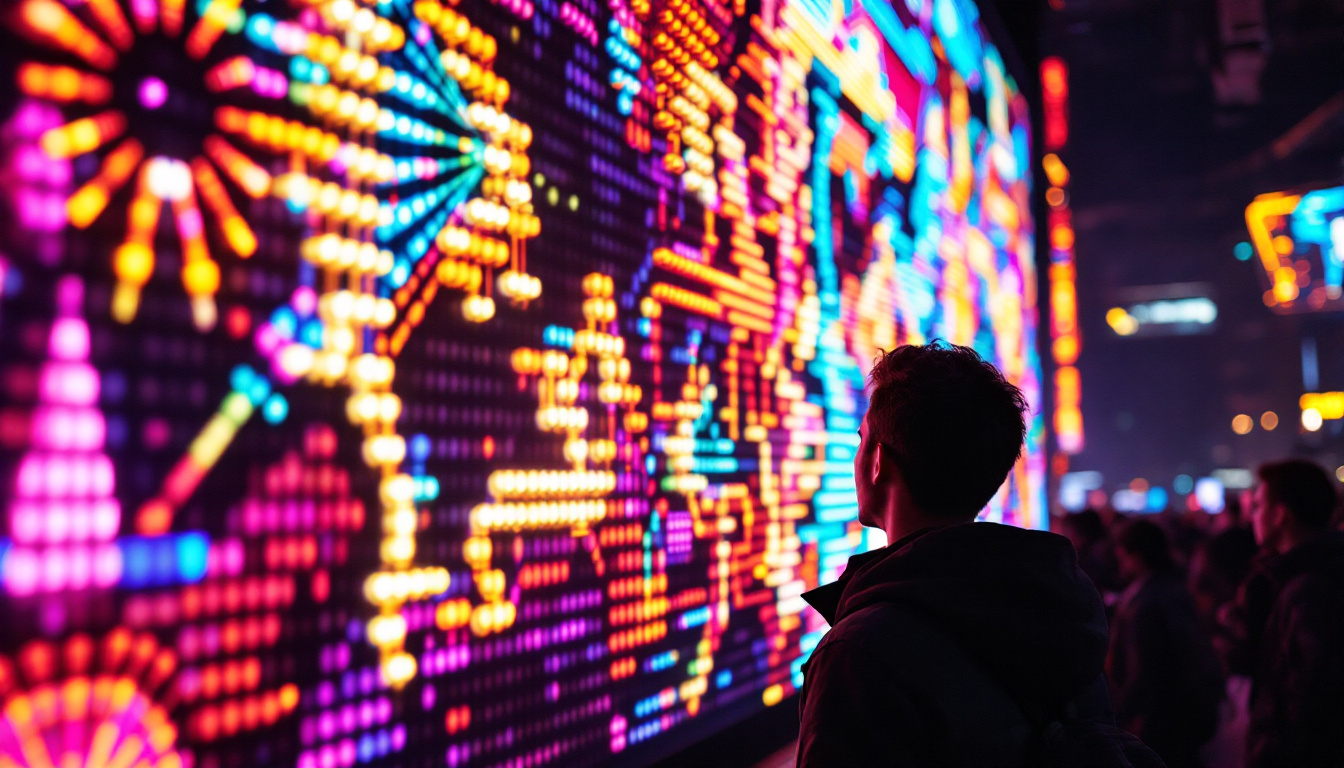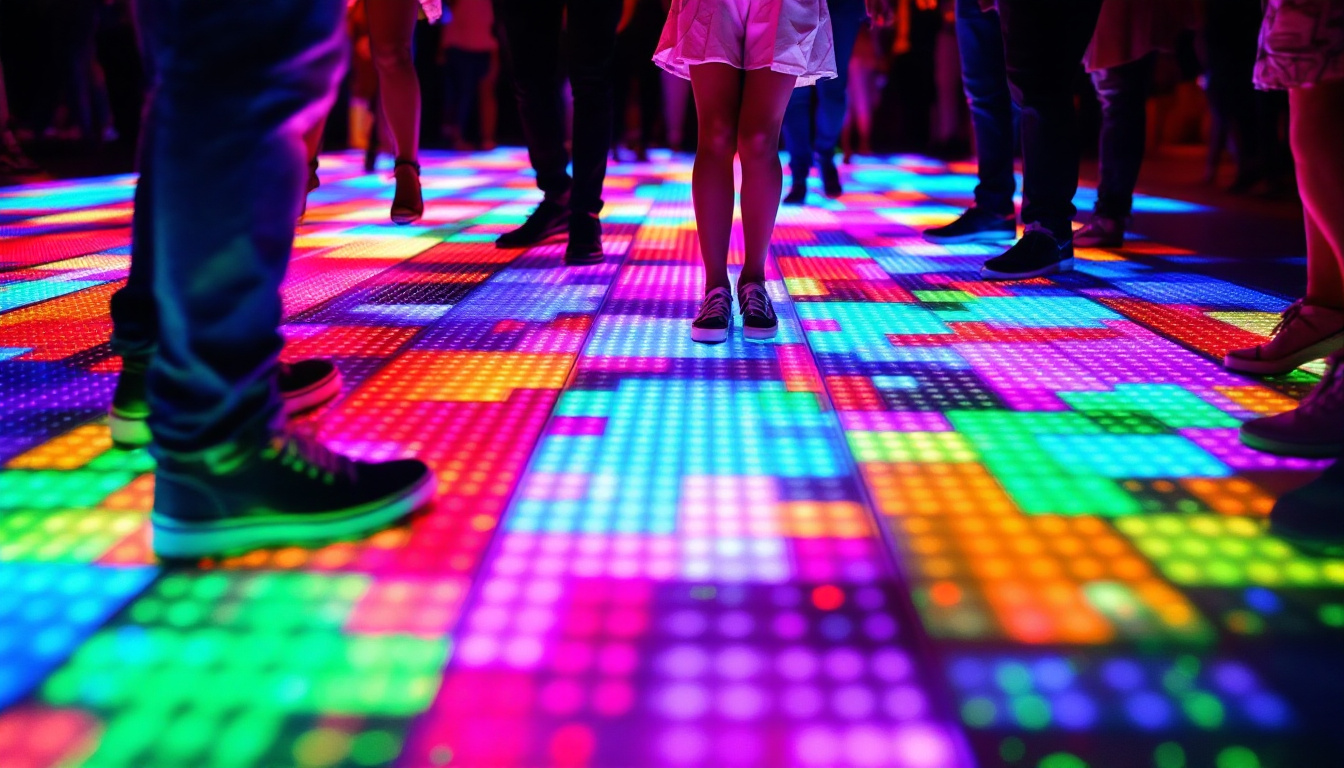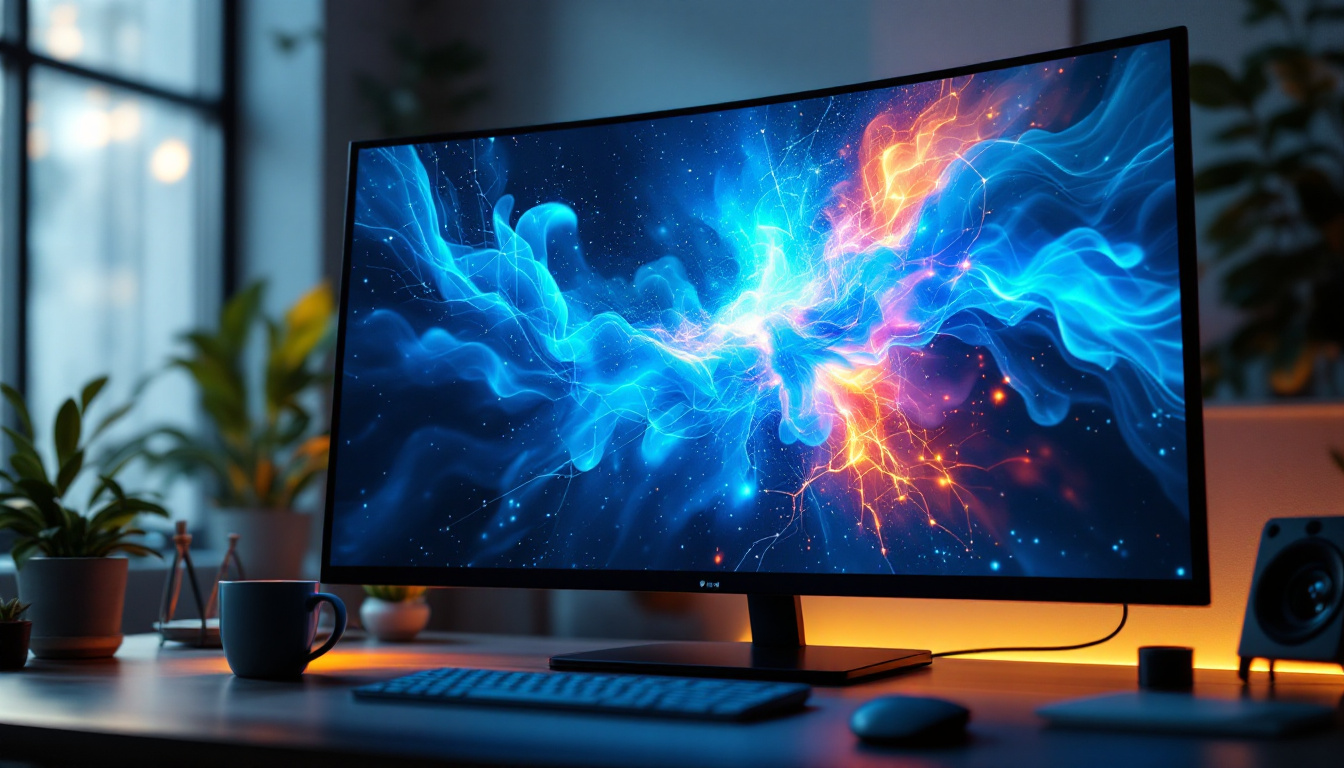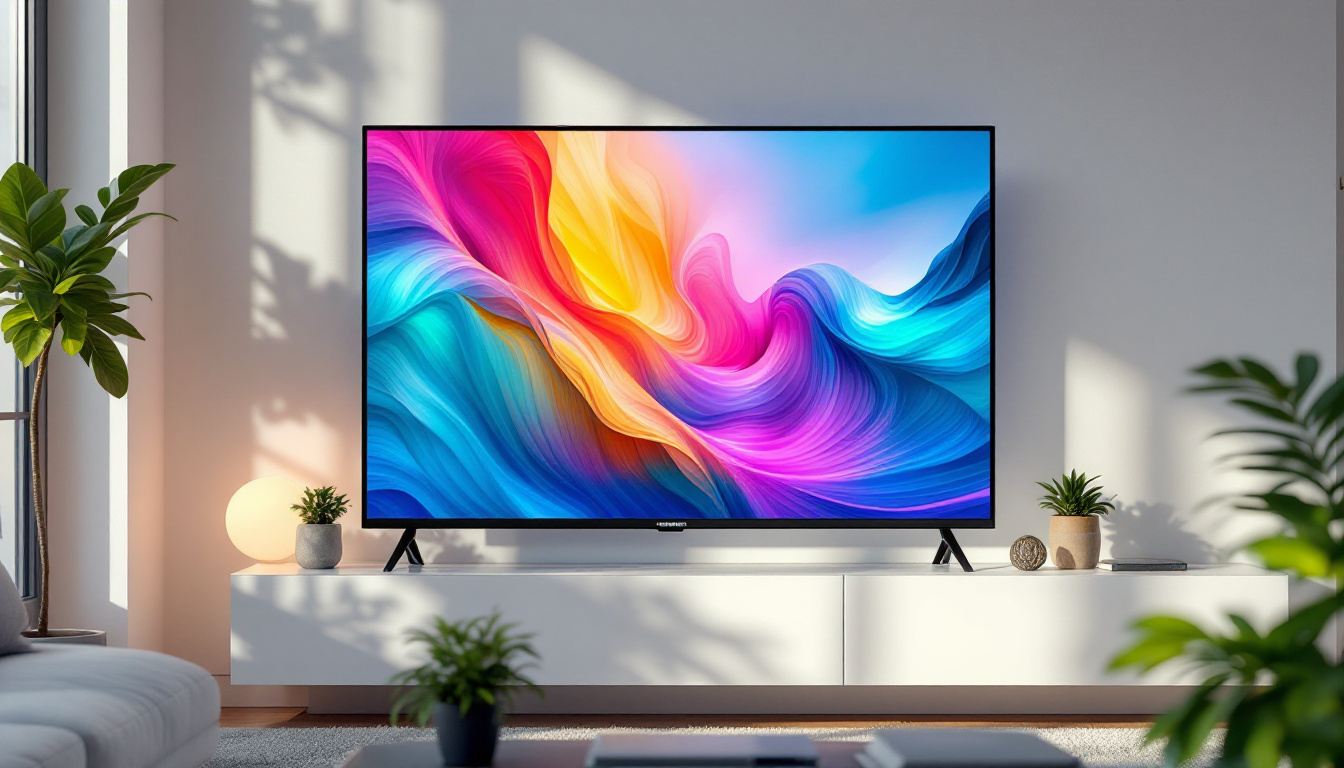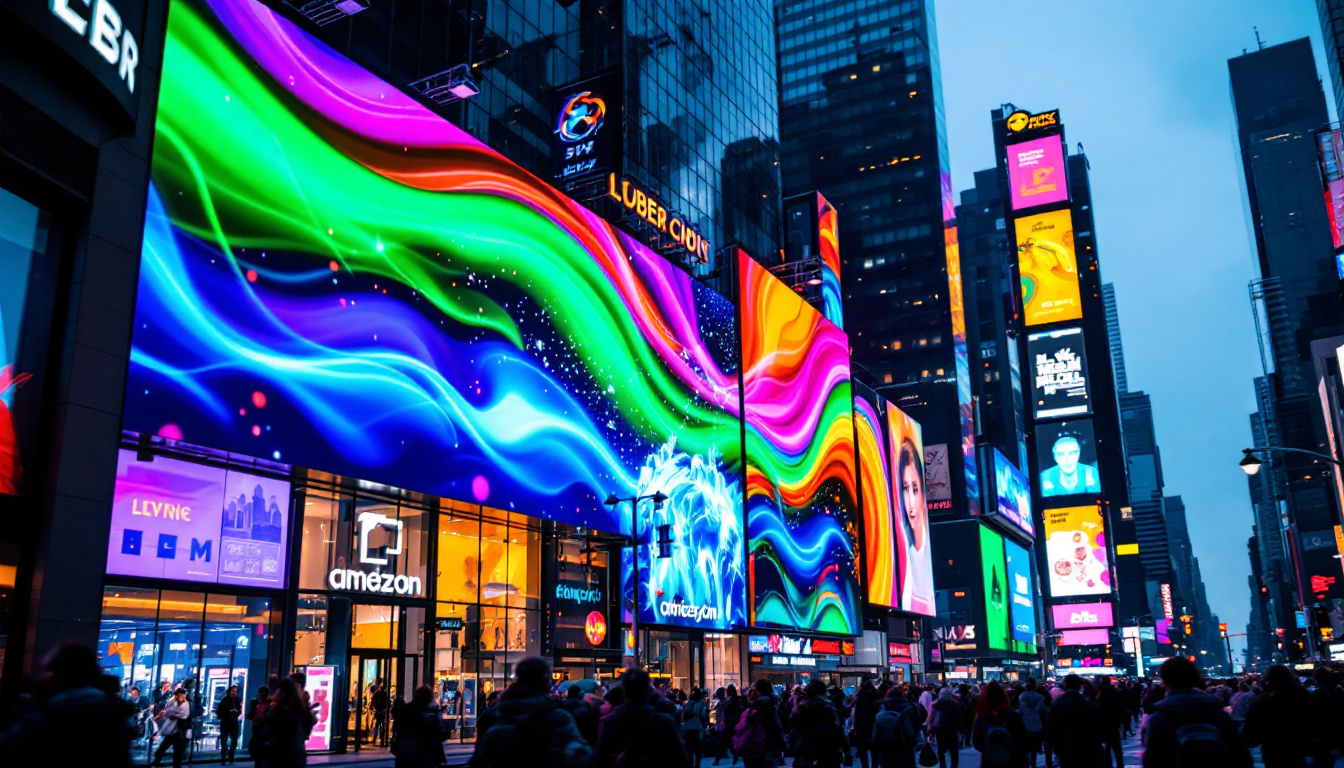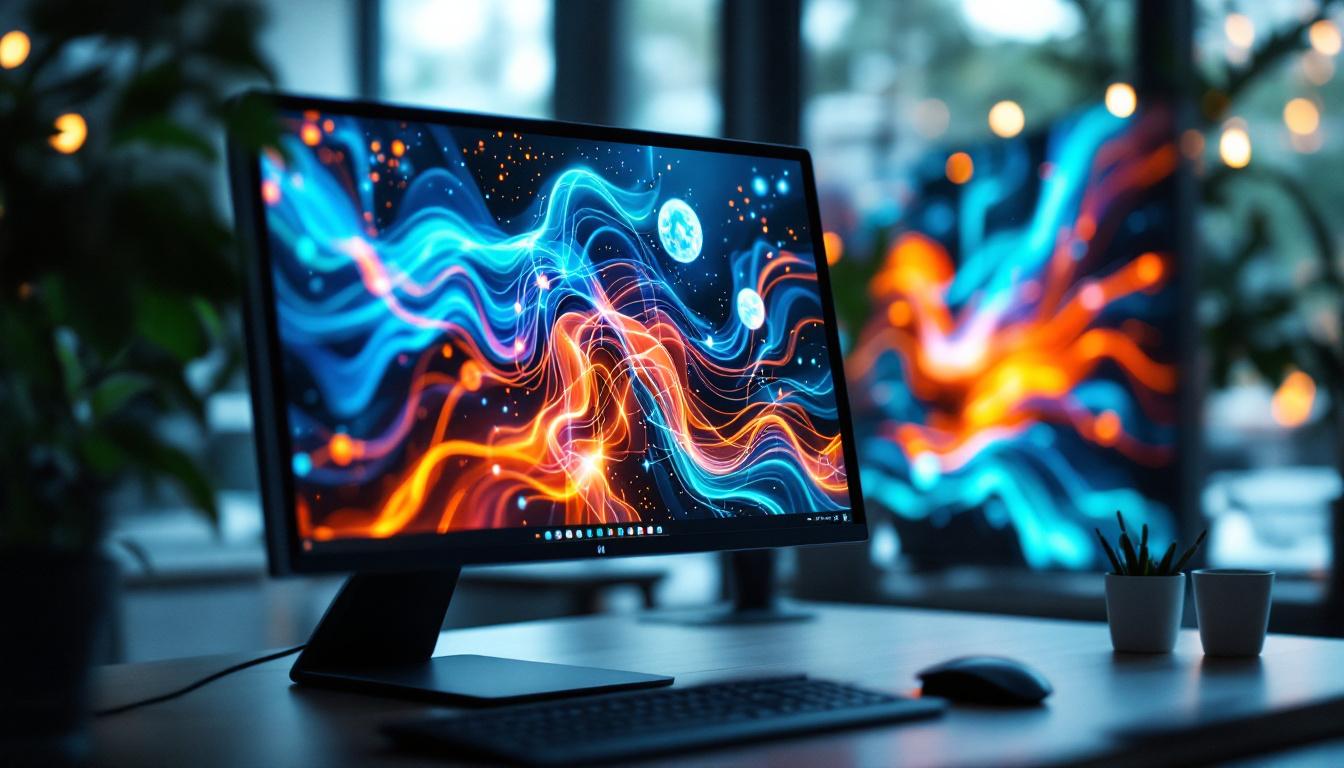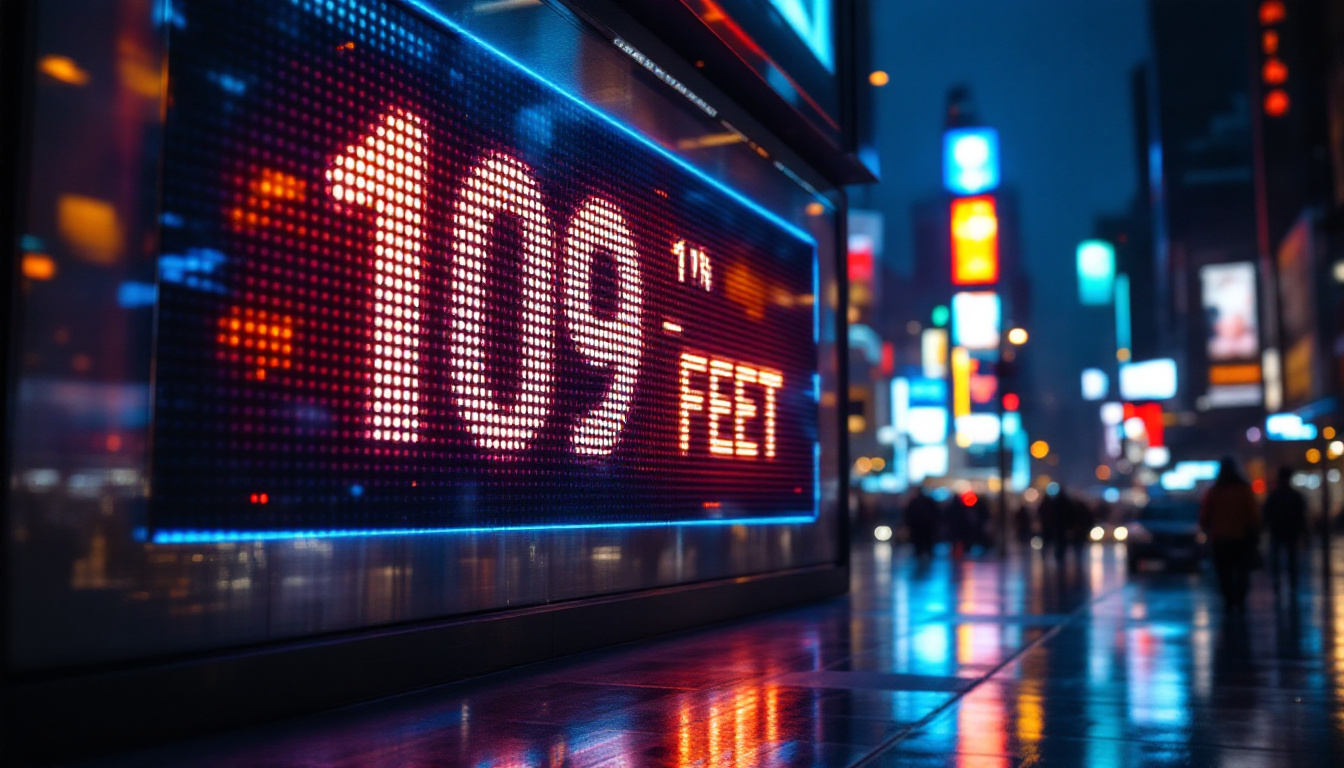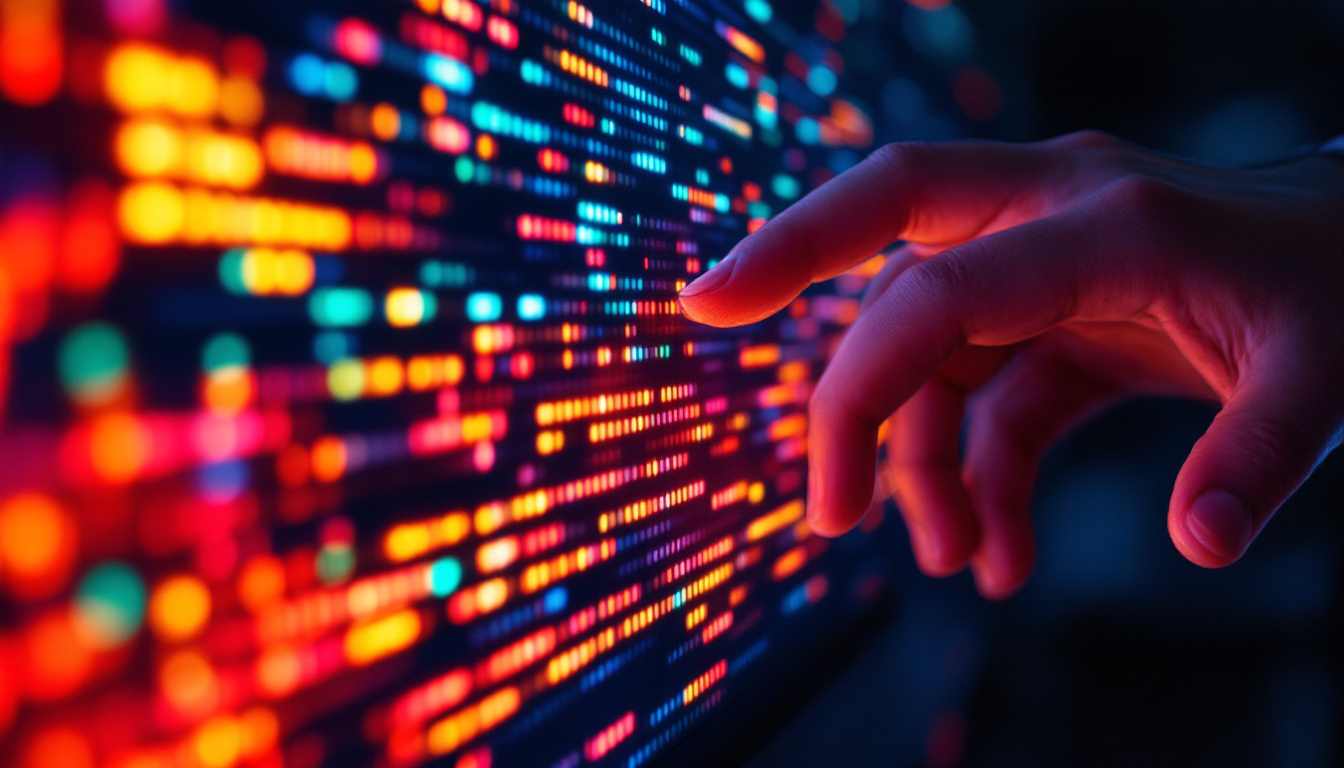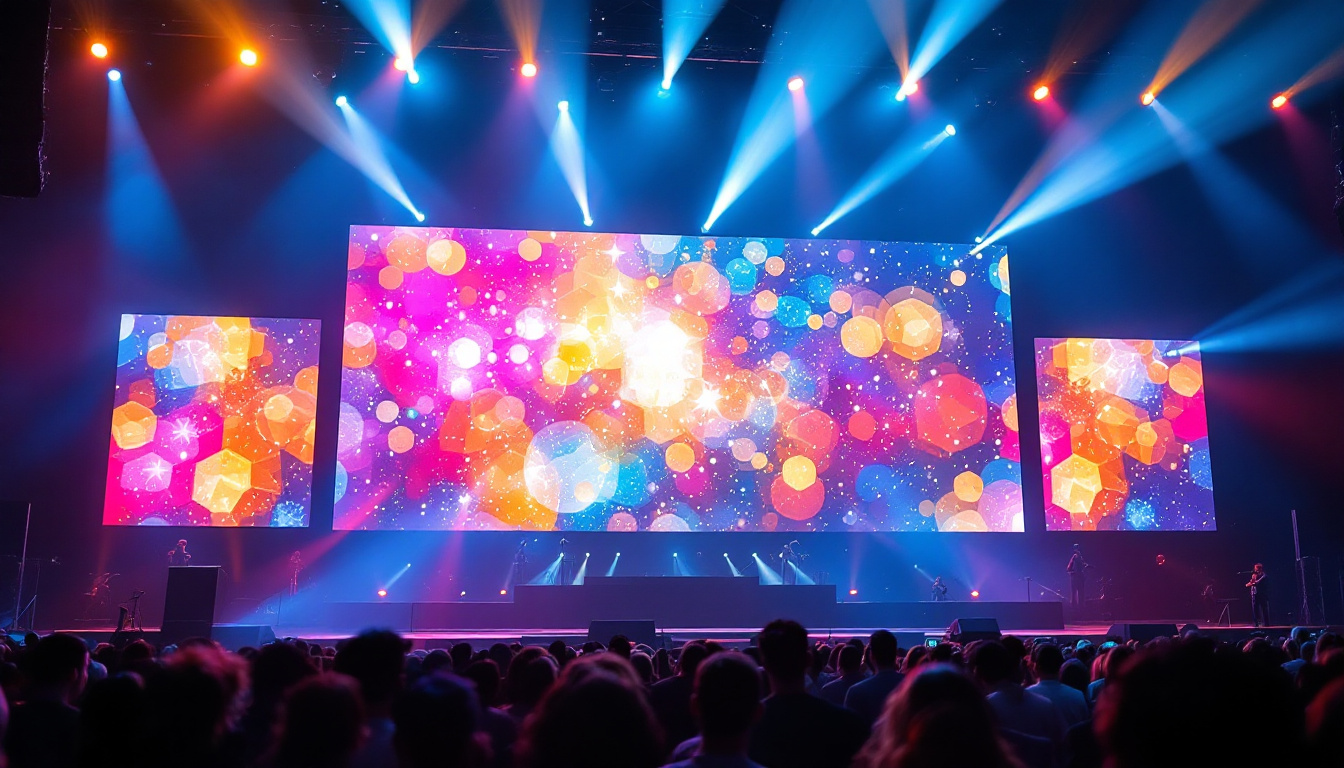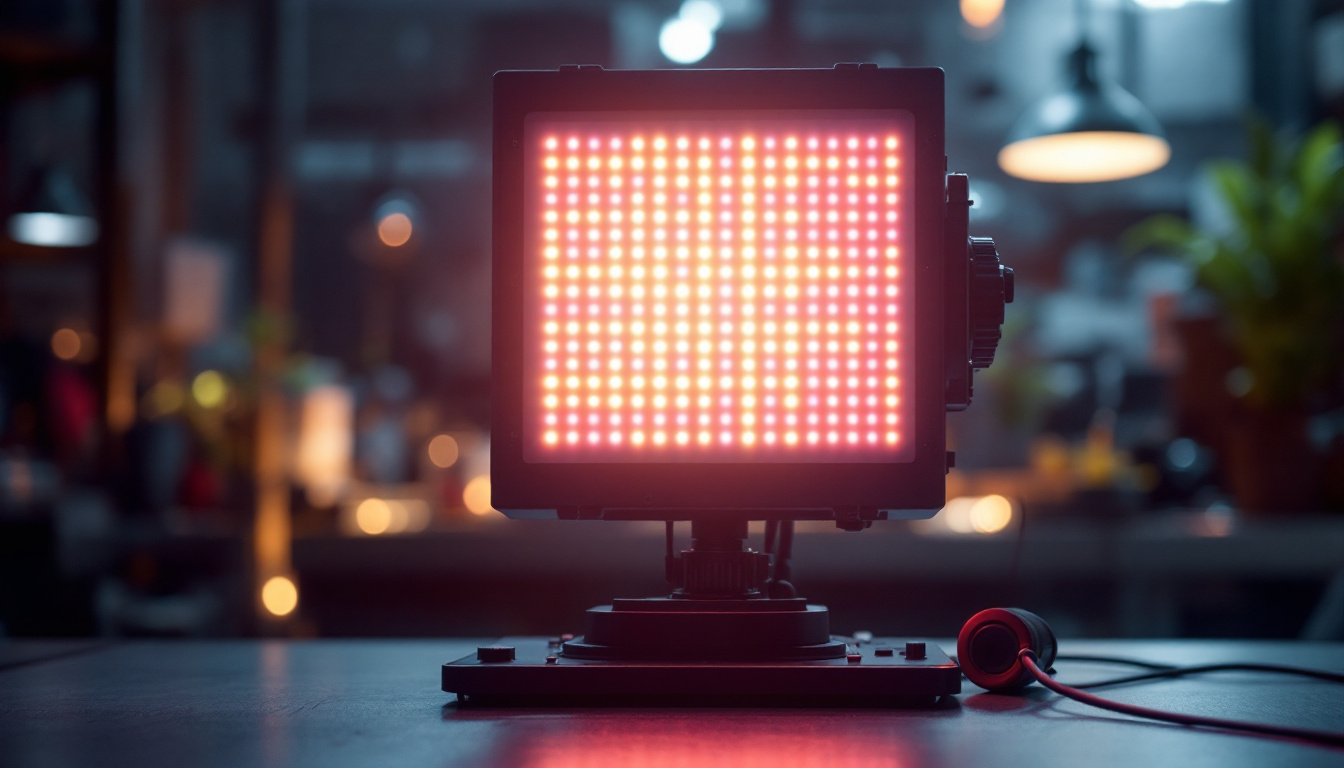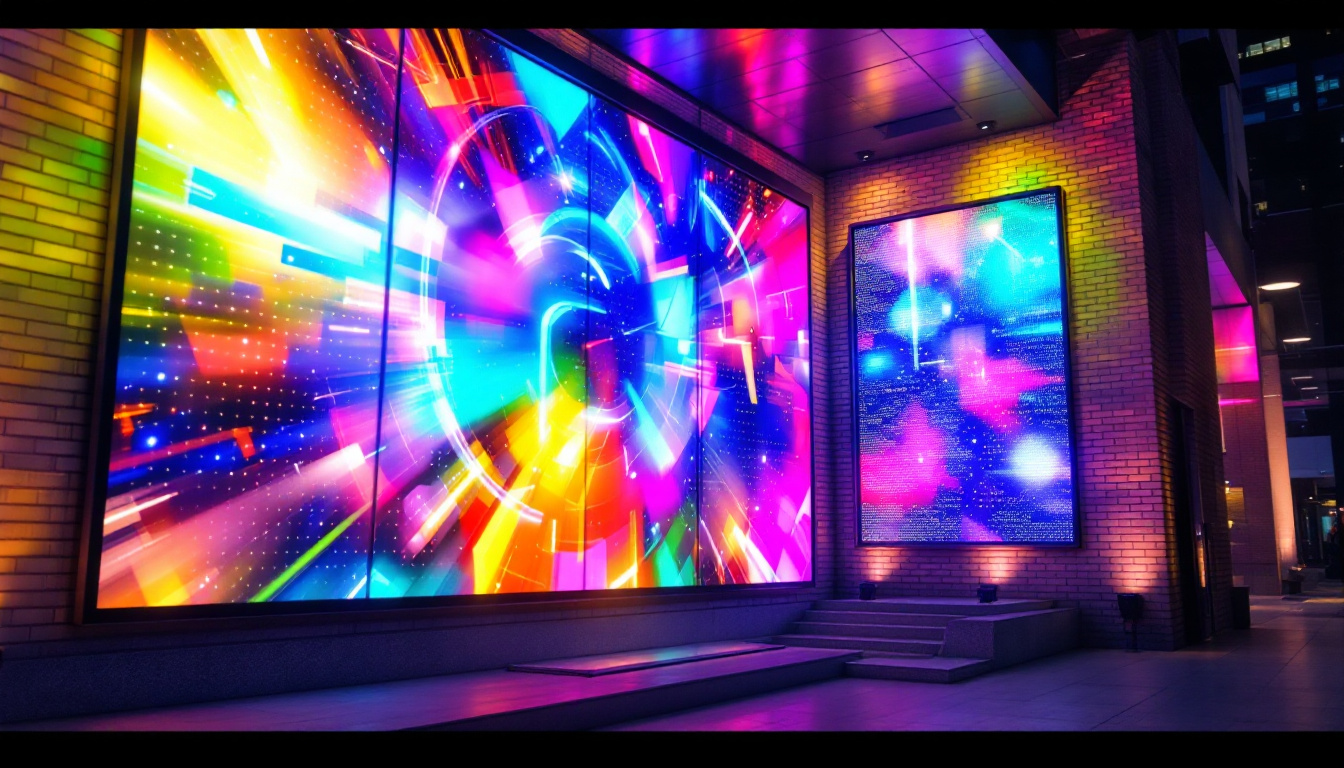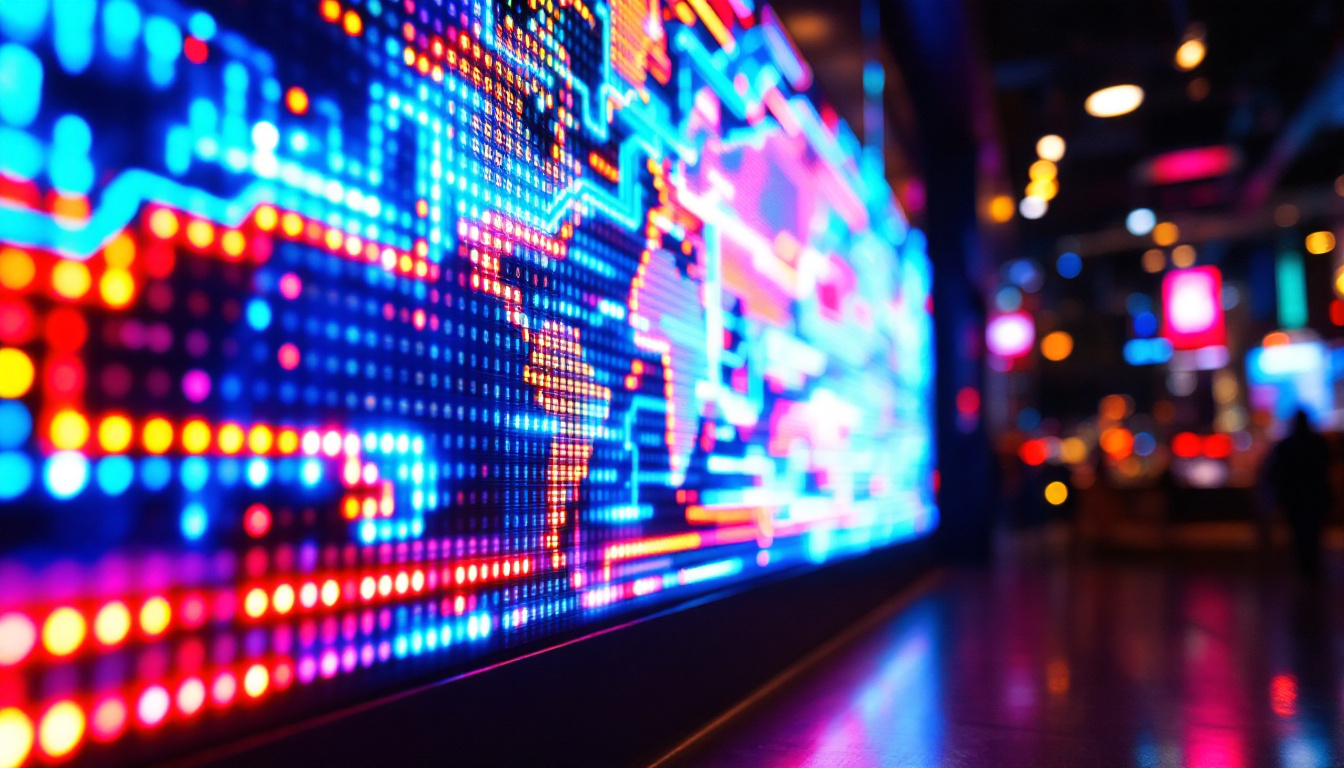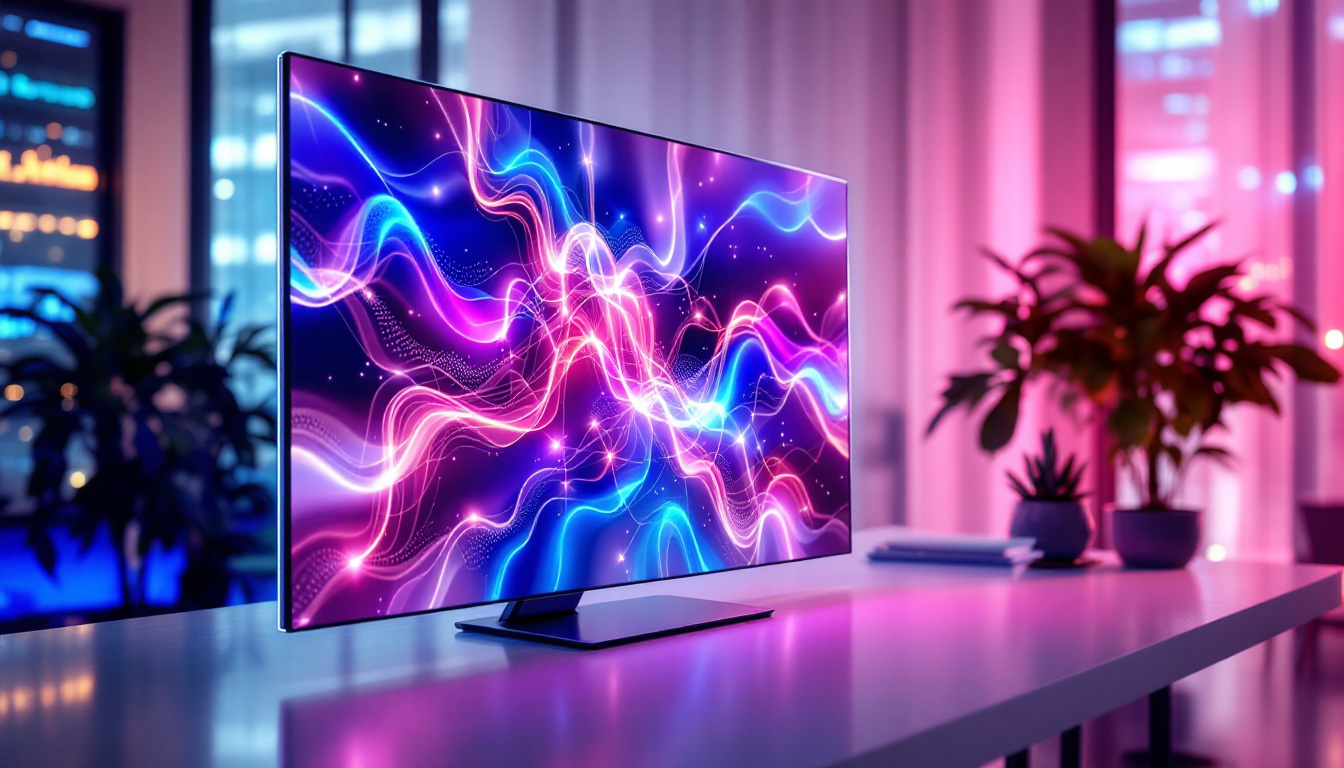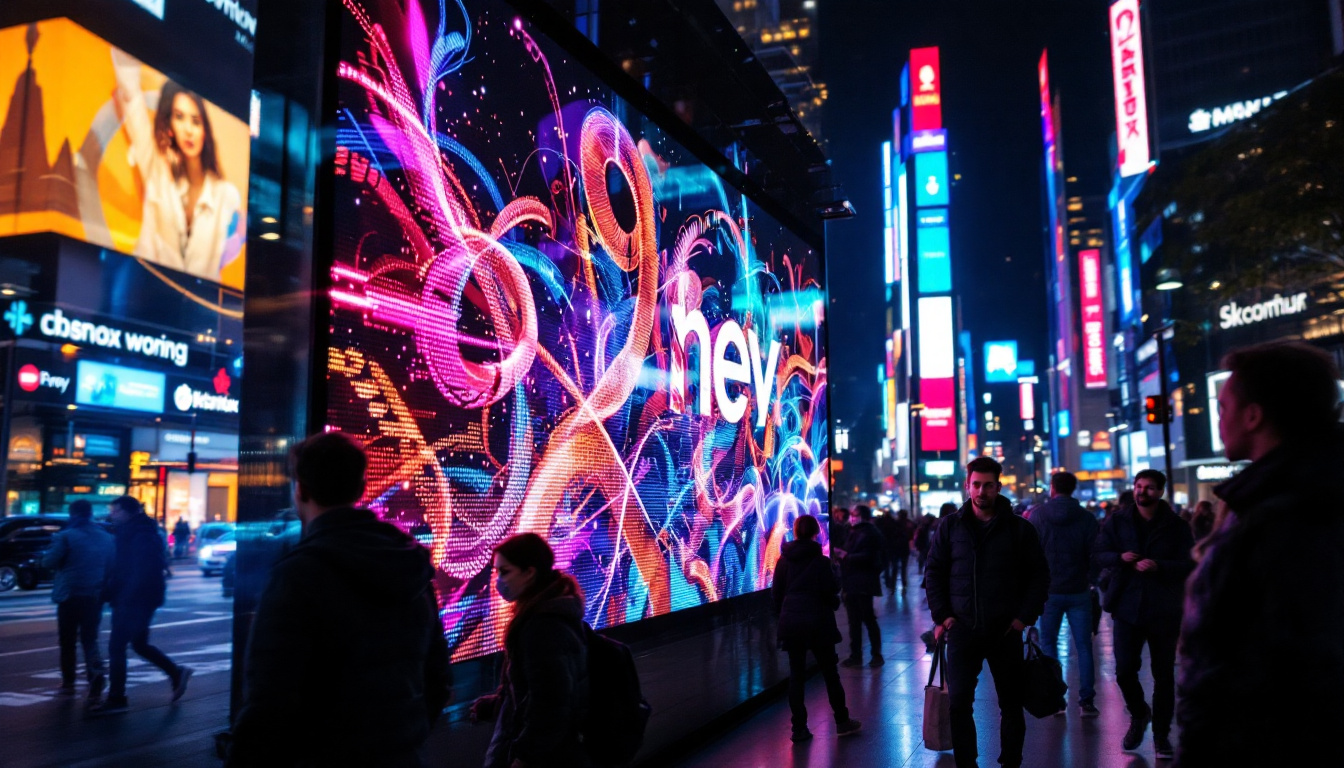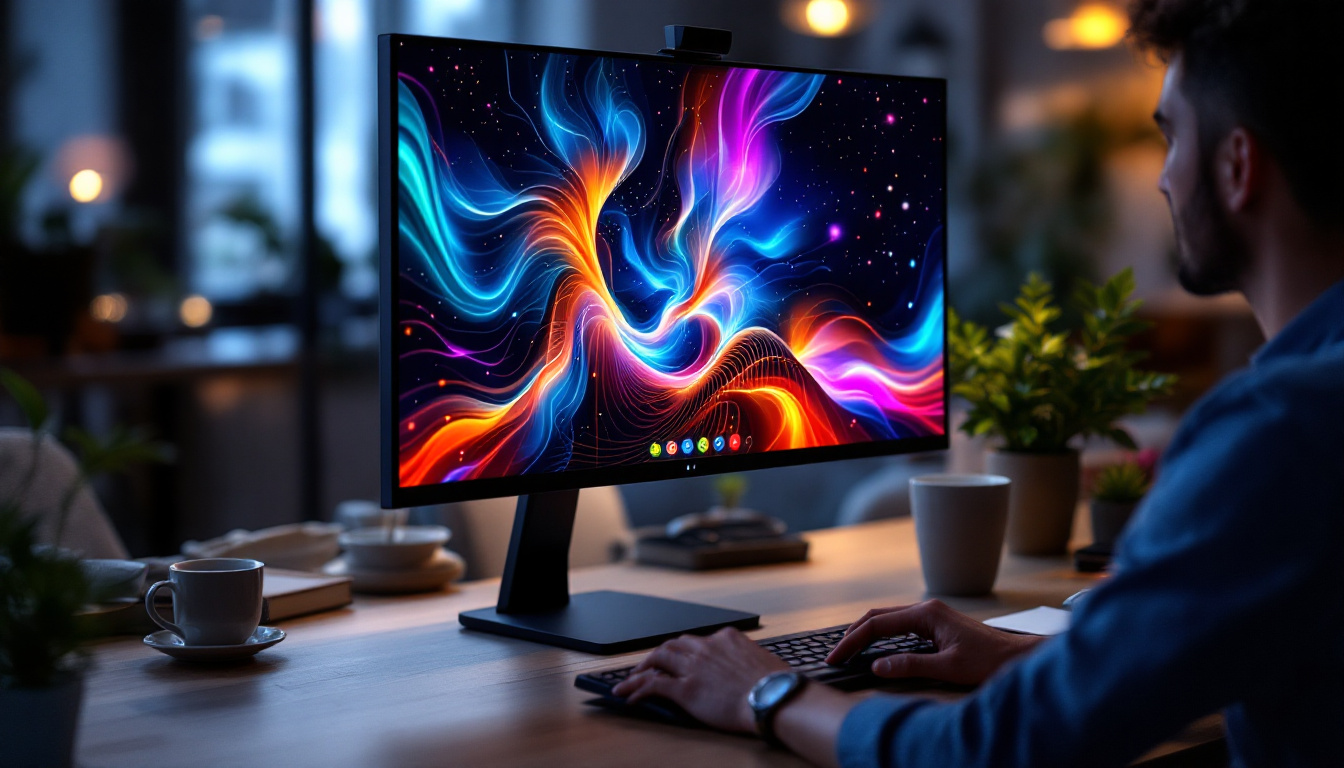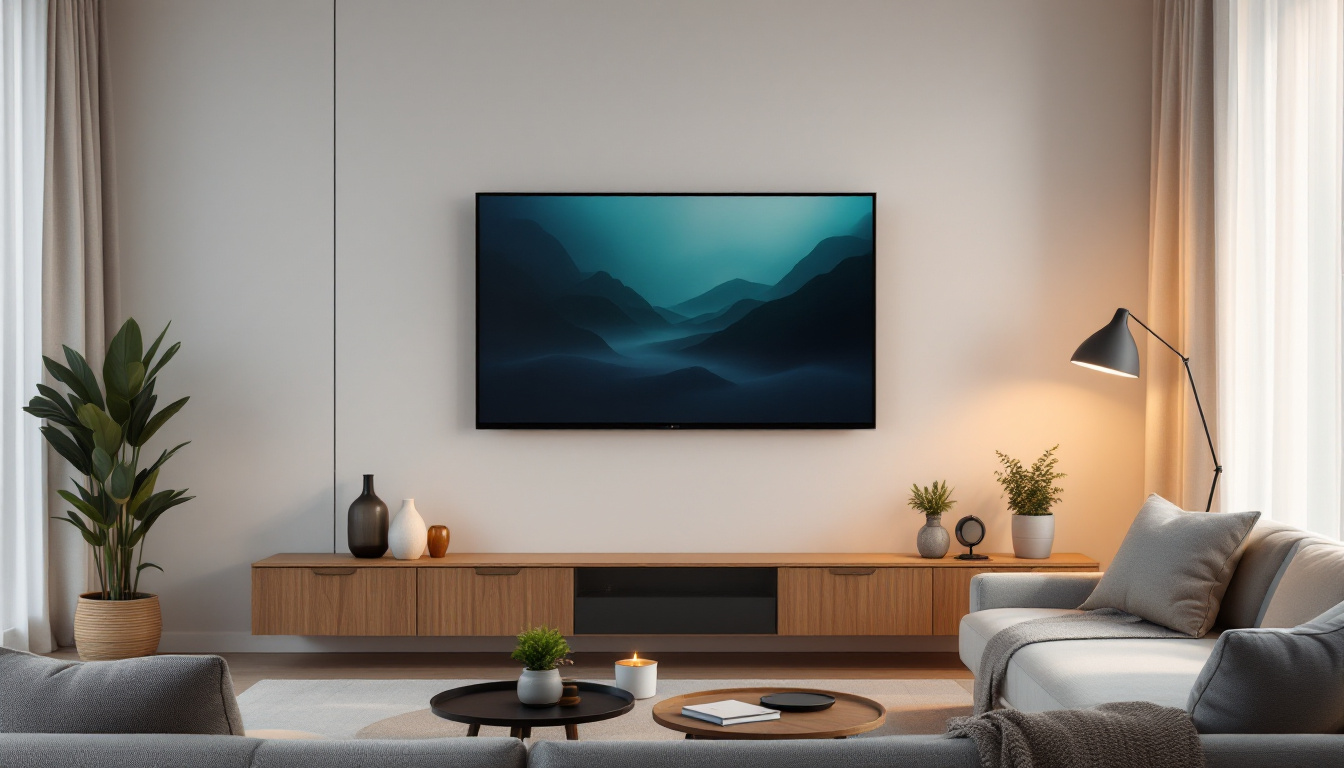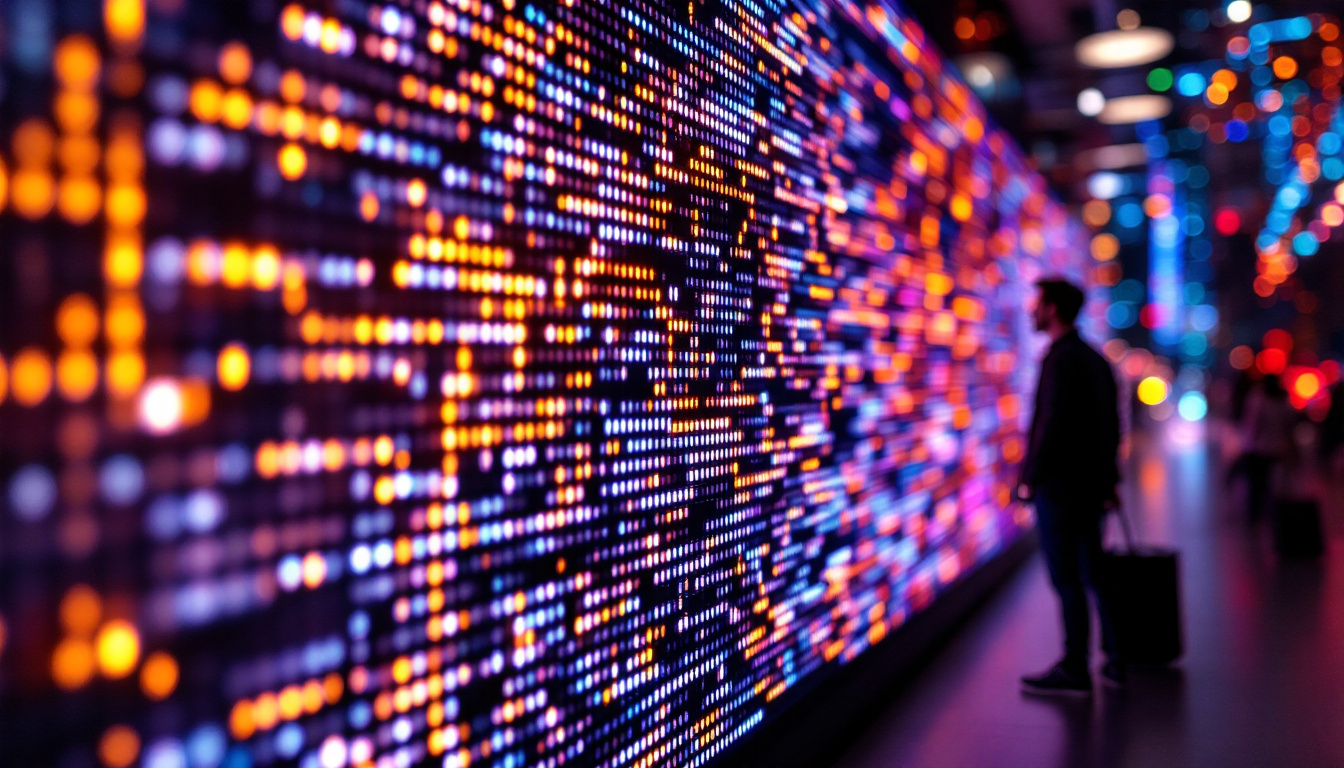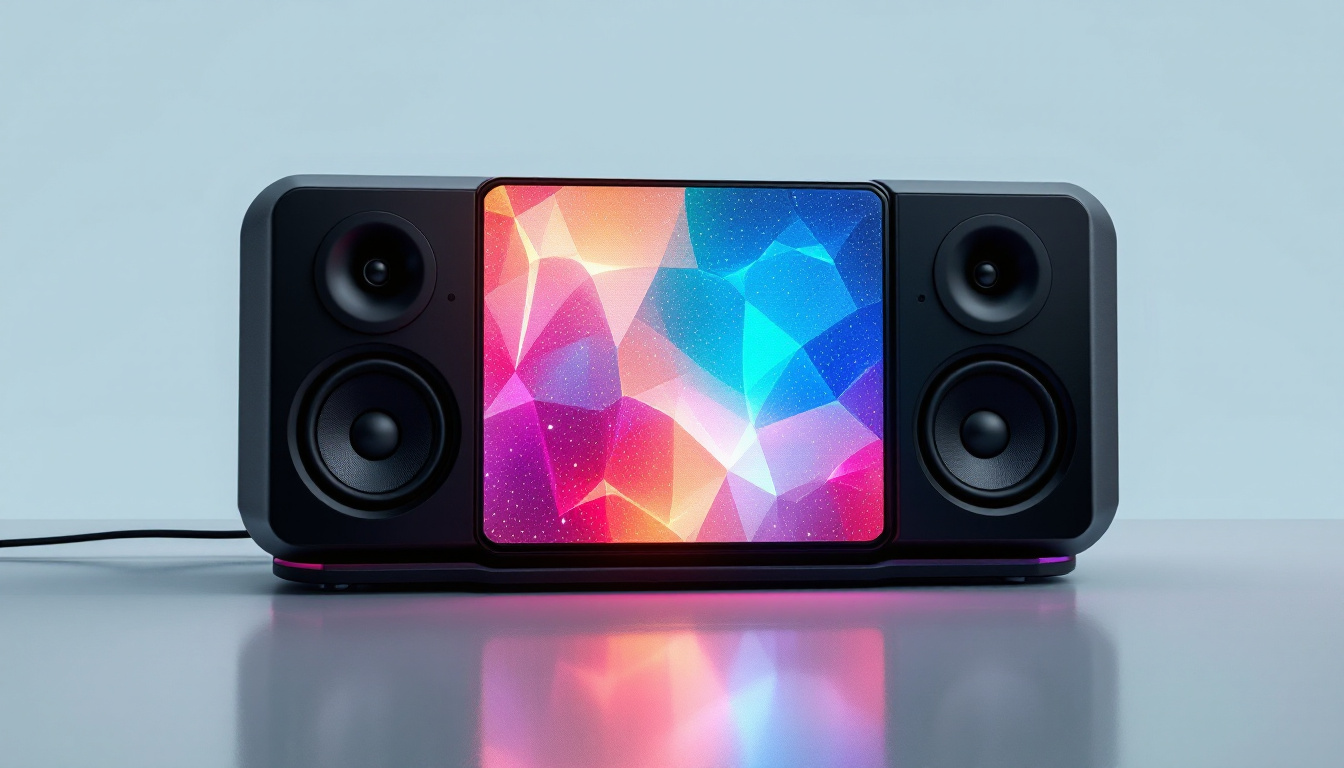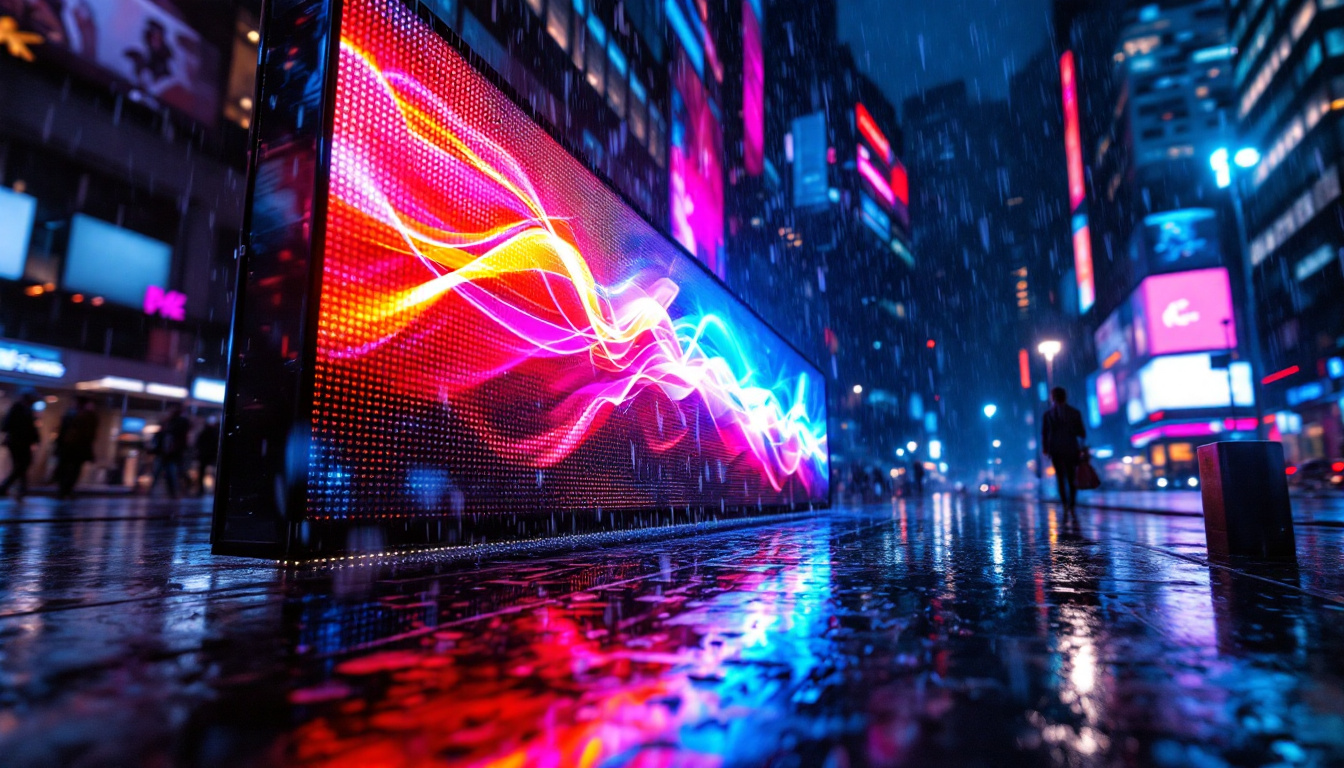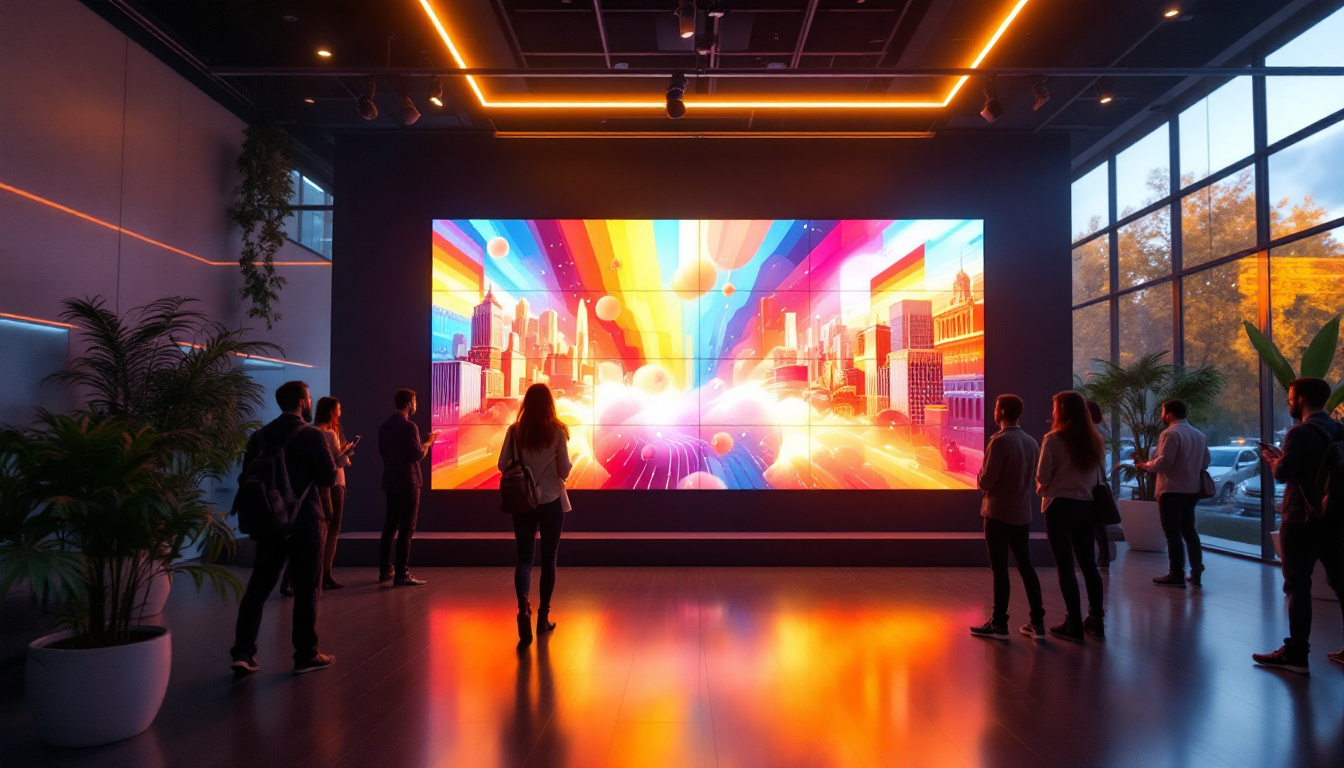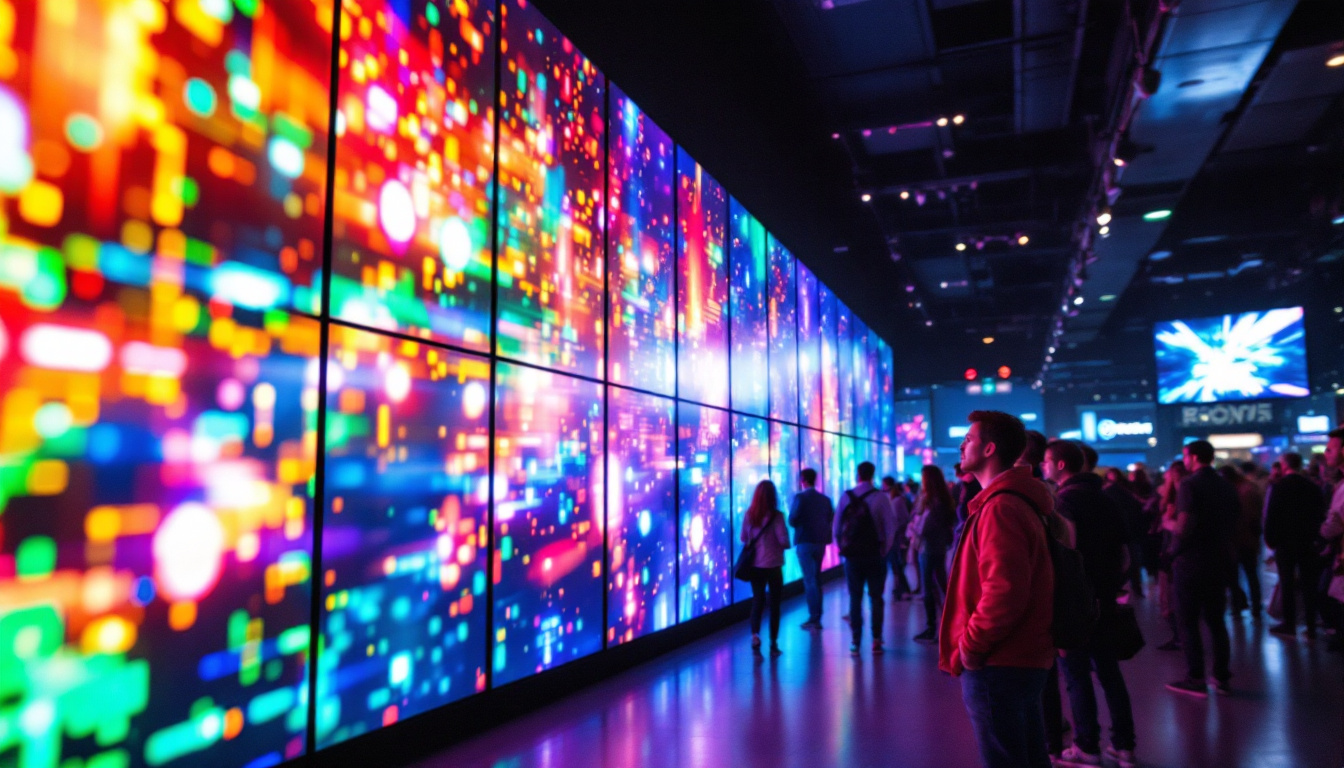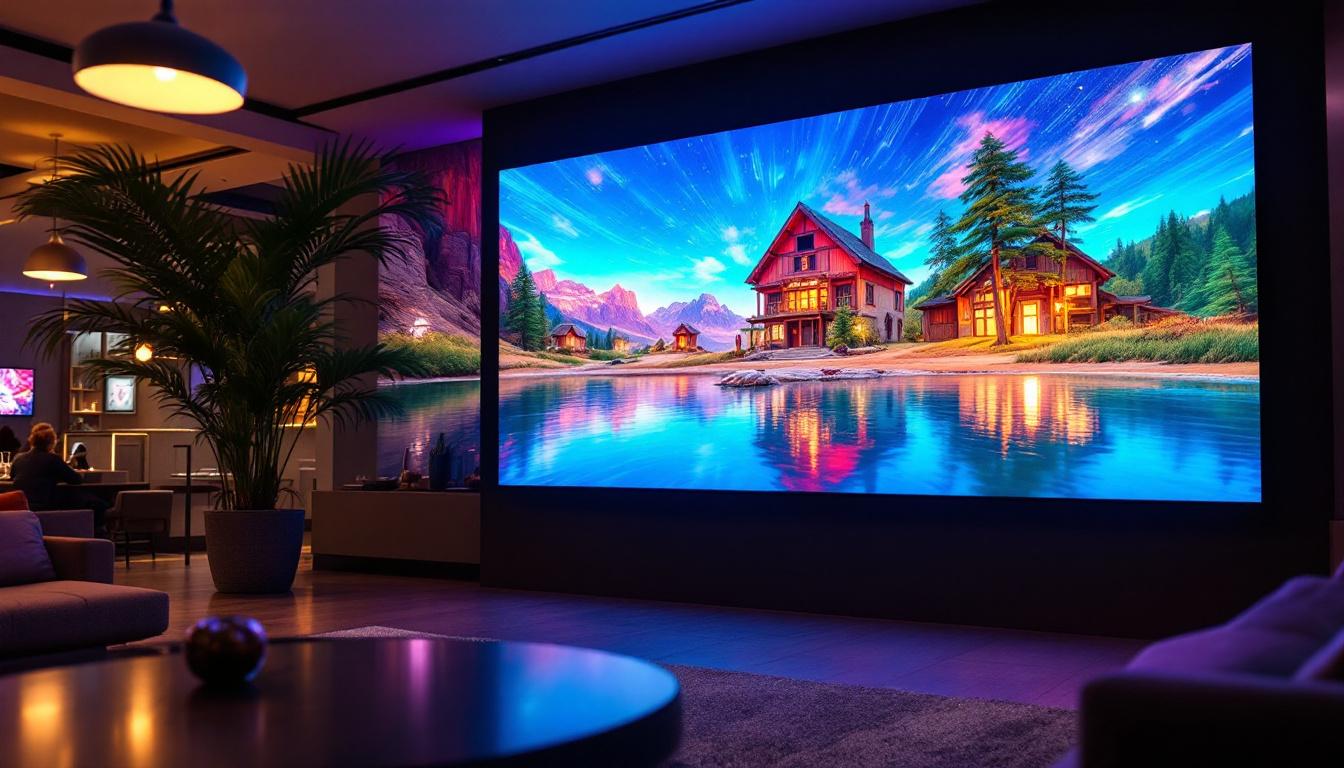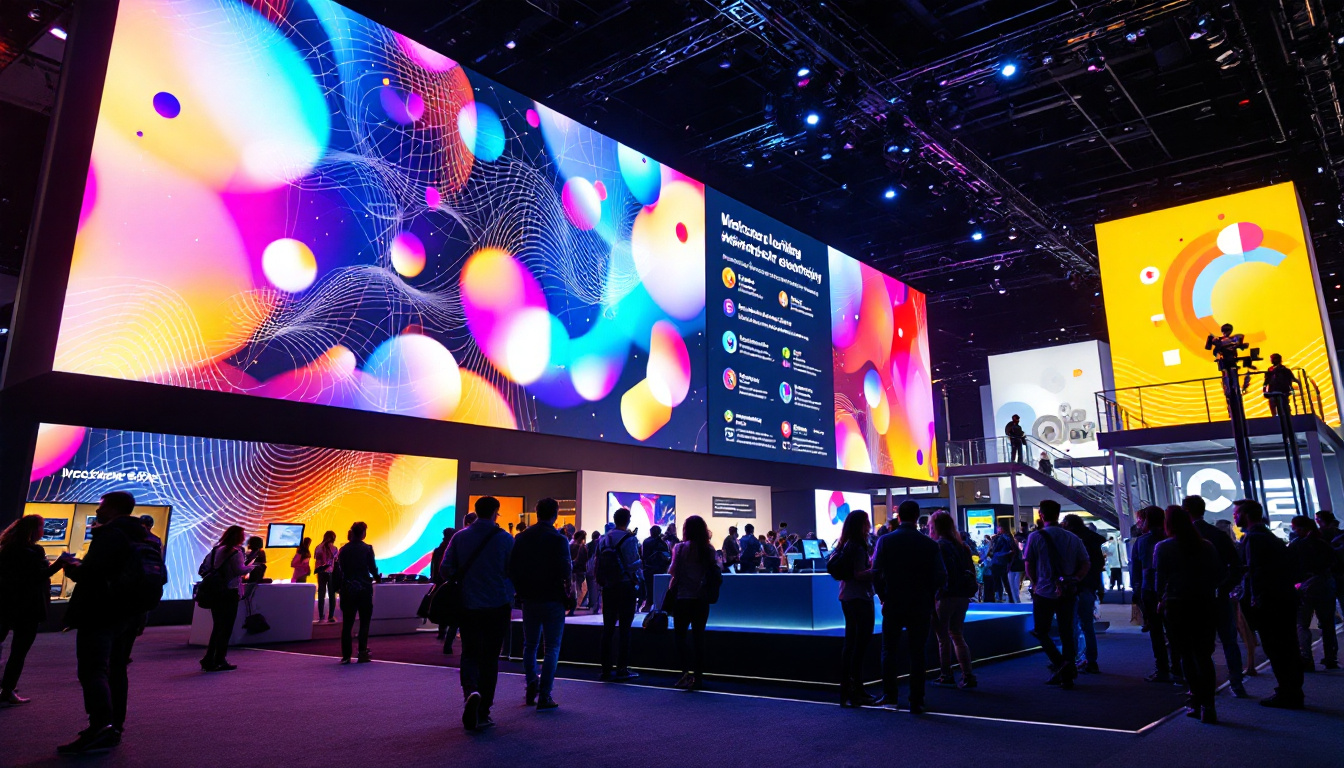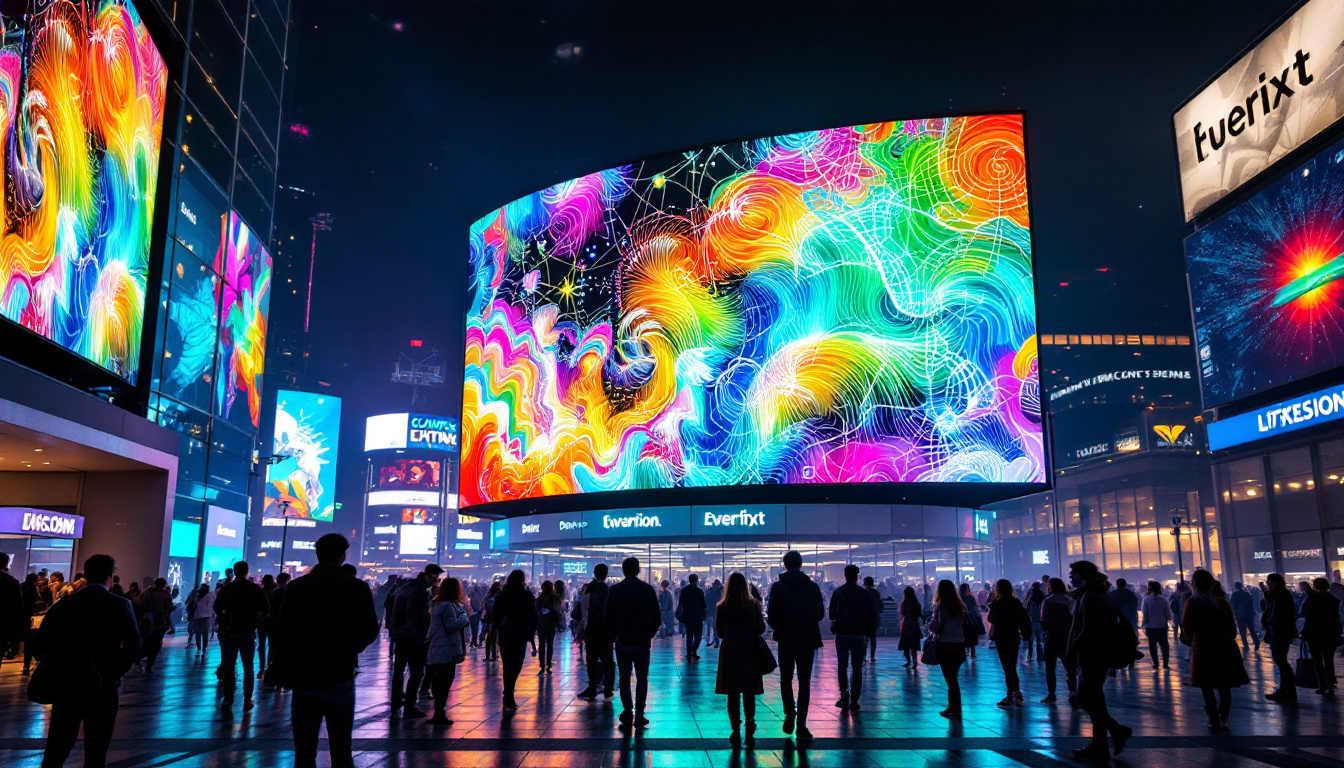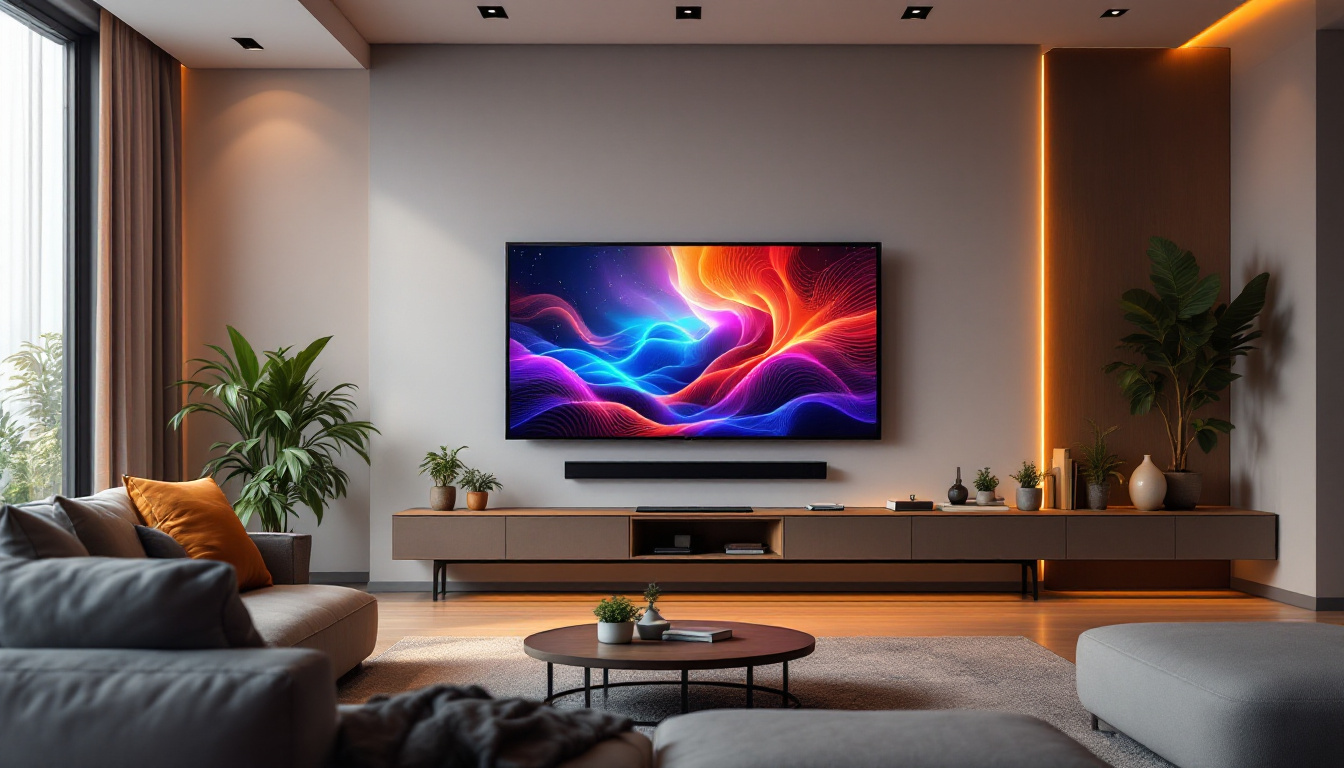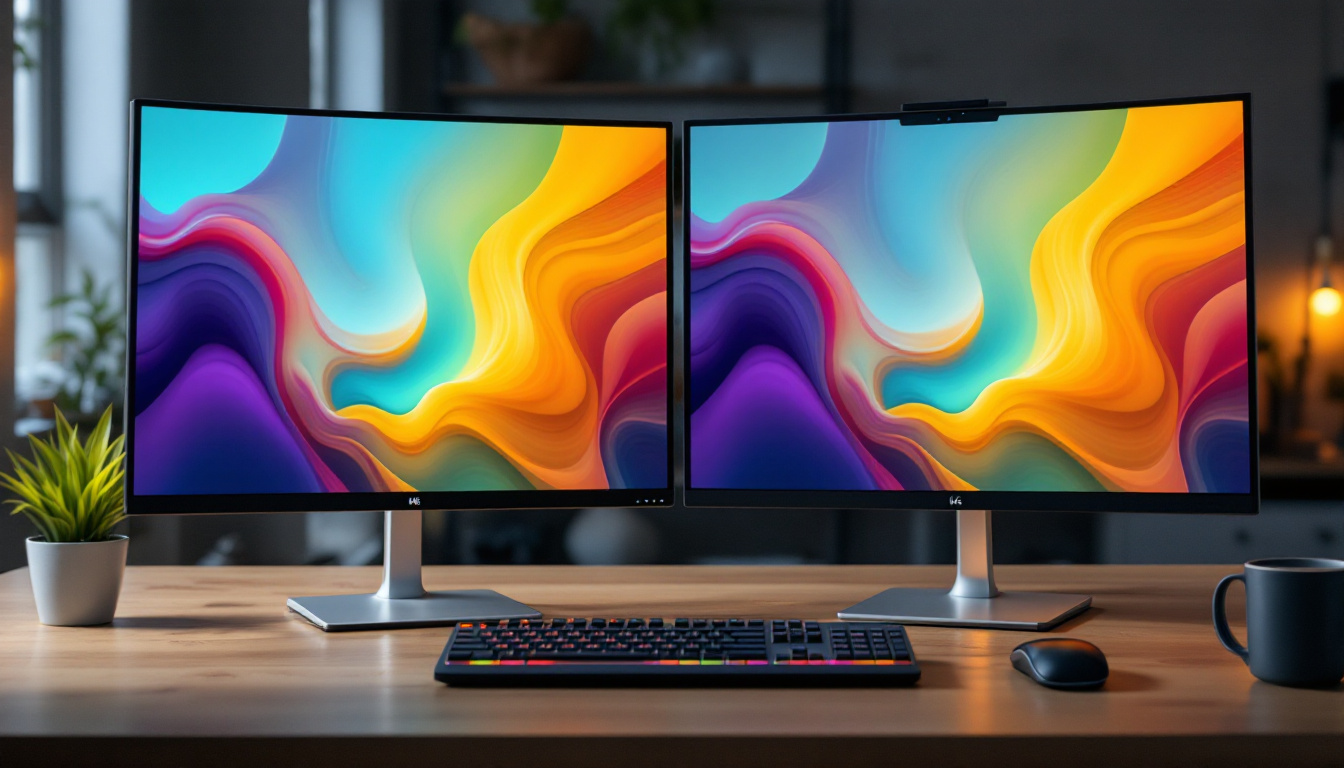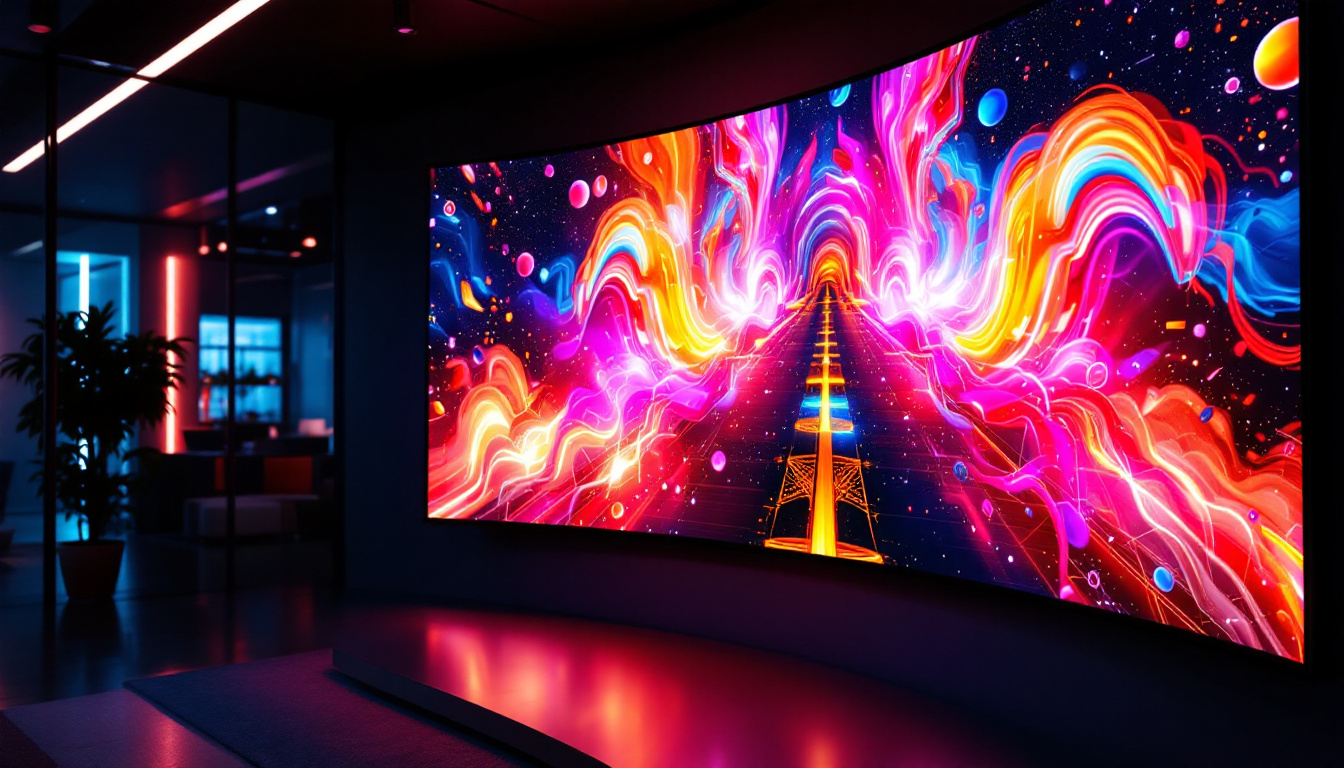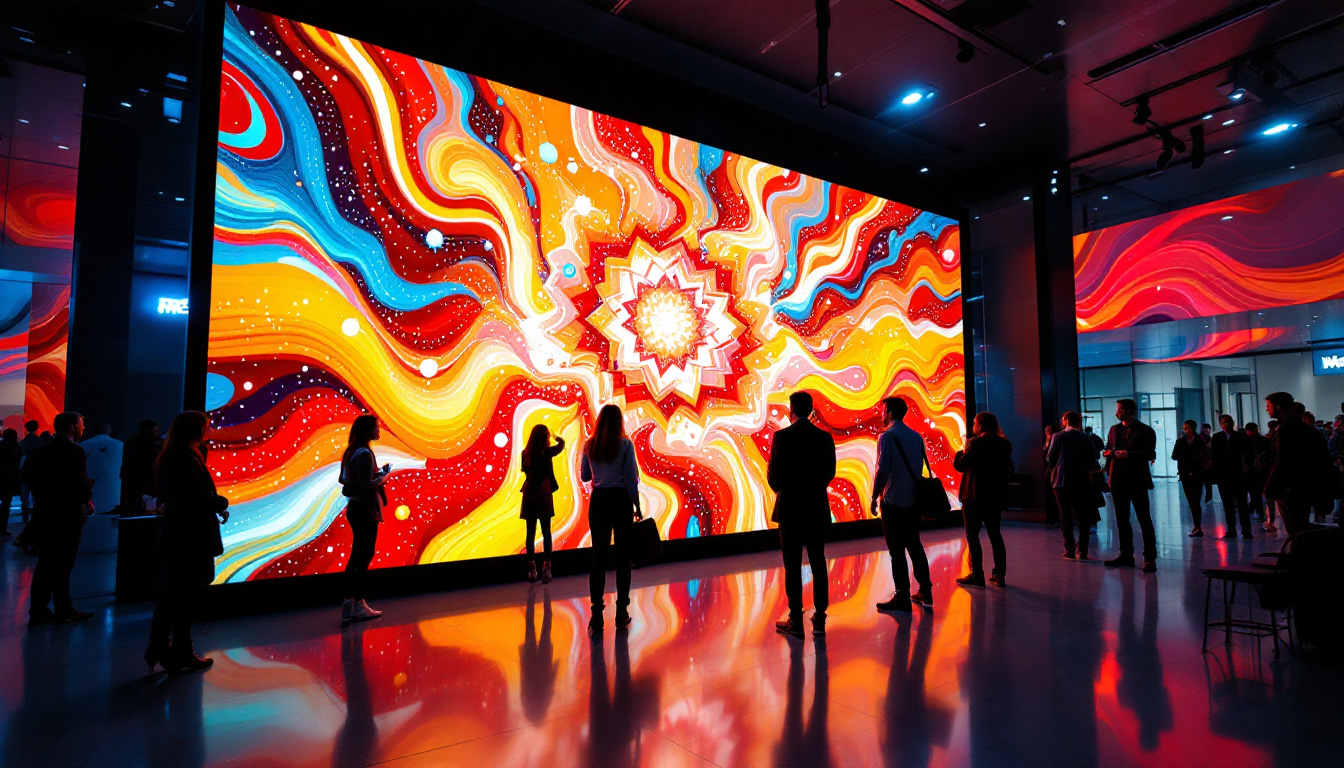In the world of modern technology, LED displays have become a staple in various applications, from televisions and smartphones to advertising billboards and digital signage. Among these, volume screens stand out for their ability to deliver high-quality visuals while being energy-efficient and versatile. This article delves into the intricacies of volume screens, exploring their technology, applications, and advantages.
Understanding LED Technology
LED, or Light Emitting Diode, technology has revolutionized the way displays are designed and utilized. Unlike traditional display technologies, such as LCD or CRT, LED displays use semiconductor materials to emit light when an electric current passes through them. This fundamental difference leads to several key advantages, including lower power consumption, longer lifespan, and the ability to produce vibrant colors with high contrast ratios.
How LED Displays Work
At the core of an LED display is a matrix of tiny diodes that emit light. These diodes can be arranged in various configurations, allowing for different display sizes and resolutions. When combined with a controller, the LED display can produce images by turning specific diodes on and off, creating a full-color image through the blending of red, green, and blue (RGB) lights. This pixel-level control not only enhances the clarity of images but also allows for dynamic content to be displayed, making LED technology ideal for applications ranging from digital billboards to interactive installations.
The brightness and color accuracy of LED displays are significantly better than older technologies. This is particularly important for volume screens, which often need to be viewed in various lighting conditions, from dimly lit environments to bright outdoor settings. Furthermore, the rapid response time of LEDs ensures that fast-moving images are rendered smoothly, making them perfect for video content and real-time data visualization.
Types of LED Displays
There are several types of LED displays, each suited for different applications. The most common types include:
- Direct View LED: These displays consist of individual LED modules that can be combined to create large screens. They are often used in outdoor advertising and large venues, providing exceptional visibility and impact due to their high brightness levels and wide viewing angles.
- LED Backlit LCD: This technology uses LEDs to illuminate an LCD panel. It is commonly found in televisions and computer monitors, providing improved brightness and color accuracy. Additionally, LED backlighting allows for features like local dimming, which enhances contrast by adjusting the brightness of specific areas of the screen.
- MicroLED: A newer technology that offers even finer pixel density, MicroLED displays are emerging in high-end applications, including televisions and digital signage. With self-emissive capabilities, MicroLEDs promise to deliver unparalleled picture quality, with deep blacks and vibrant colors, while also being energy efficient.
In addition to these types, there are also specialized LED displays designed for specific environments. For instance, transparent LED displays are gaining popularity in retail settings, allowing products behind the screen to remain visible while still displaying dynamic content. Similarly, flexible LED displays are being developed for creative applications, enabling curved or irregular shapes that can fit into unique architectural designs. As technology continues to advance, the potential applications for LED displays seem virtually limitless, paving the way for innovative solutions across various industries.
Applications of Volume Screens
Volume screens, which utilize LED technology, are employed in a myriad of settings. Their versatility makes them suitable for both indoor and outdoor environments, catering to various industries.
Advertising and Marketing
One of the most prominent applications of volume screens is in advertising. Billboards and digital signage utilize large LED displays to capture attention and convey messages effectively. The ability to change content dynamically allows advertisers to target specific audiences at different times of the day, maximizing engagement.
Moreover, the high visibility and brightness of LED displays make them ideal for outdoor advertising, ensuring that messages are seen even in bright sunlight. This adaptability has made LED displays a preferred choice for brands looking to enhance their visibility and impact. Additionally, the integration of advanced analytics with these screens enables marketers to assess viewer interaction and adjust their strategies in real-time, further optimizing advertising efforts.
Entertainment and Events
In the entertainment industry, volume screens play a crucial role in enhancing the audience experience. Concerts, festivals, and sporting events often feature large LED screens that display live feeds, graphics, and advertisements. These screens not only provide vital information but also create an immersive experience for attendees.
Additionally, theaters and auditoriums are increasingly adopting LED technology for stage backdrops and displays, allowing for dynamic visual storytelling that complements performances. The ability to synchronize visuals with soundtracks elevates the overall impact of a show, making it more memorable. Furthermore, the use of volume screens in virtual reality experiences has opened new avenues for interactive entertainment, allowing audiences to engage with content in unprecedented ways.
Corporate and Educational Use
Volume screens are also finding their way into corporate environments and educational institutions. In corporate settings, LED displays are used for presentations, meetings, and information sharing, providing a clear and engaging way to communicate ideas.
In educational institutions, these displays can enhance learning by providing visual aids and interactive content. Whether in classrooms or auditoriums, volume screens can facilitate a more engaging learning environment. The incorporation of touch-screen technology allows students to interact directly with the content, fostering collaboration and participation. Moreover, institutions are leveraging these screens for remote learning, enabling seamless integration of virtual classrooms and ensuring that students remain connected and engaged, regardless of their physical location.
Advantages of Volume Screens
The adoption of volume screens in various sectors is driven by numerous advantages they offer over traditional display technologies. Understanding these benefits can help organizations make informed decisions about their display solutions.
Energy Efficiency
One of the standout features of LED technology is its energy efficiency. Volume screens consume significantly less power compared to traditional displays, which not only reduces operational costs but also minimizes environmental impact. This efficiency is particularly beneficial for businesses that operate large-scale displays, as it can lead to substantial savings over time.
Longevity and Durability
LED displays are known for their longevity. With a lifespan that can exceed 100,000 hours, they outlast many other display technologies. This durability makes them ideal for both indoor and outdoor applications, where they may be exposed to harsh conditions. Their resistance to shock and vibration further enhances their reliability, making them a preferred choice for high-traffic areas.
High Resolution and Color Quality
Volume screens offer exceptional resolution and color quality, providing sharp images and vibrant colors. This is particularly important for applications where visual clarity is paramount, such as advertising and entertainment. The ability to produce high-definition content ensures that messages are communicated effectively, capturing the audience’s attention.
Challenges and Considerations
While volume screens offer numerous advantages, there are also challenges and considerations that organizations must keep in mind when implementing this technology.
Cost of Implementation
The initial investment for volume screens can be significant, particularly for high-quality models. Organizations must weigh the upfront costs against the long-term benefits, including energy savings and reduced maintenance costs. Careful budgeting and planning are essential to ensure a positive return on investment.
Maintenance and Upkeep
Although LED displays are generally low-maintenance, they do require periodic upkeep to ensure optimal performance. Regular cleaning, calibration, and software updates are necessary to maintain image quality and functionality. Organizations should factor in these ongoing costs when considering the total cost of ownership.
Environmental Considerations
As with any technology, the environmental impact of volume screens should be taken into account. While LED displays are more energy-efficient than traditional options, the production and disposal of electronic components can pose environmental challenges. Organizations should seek sustainable practices in sourcing and disposing of their displays to minimize their ecological footprint.
Future Trends in LED Volume Screens
The future of volume screens looks promising, with ongoing advancements in technology and design. Several trends are emerging that are likely to shape the evolution of LED displays in the coming years.
Increased Resolution and Pixel Density
As technology continues to advance, the demand for higher resolution and pixel density in LED displays is growing. MicroLED technology, for instance, is paving the way for incredibly detailed displays with smaller pixels, allowing for closer viewing distances without loss of image quality. This trend is particularly relevant for applications in virtual reality and augmented reality, where immersive experiences are paramount.
Integration with Smart Technology
The integration of LED displays with smart technology is another significant trend. As the Internet of Things (IoT) continues to expand, volume screens are becoming more connected and interactive. This enables real-time data sharing, dynamic content updates, and enhanced user engagement. For instance, smart displays can adjust their content based on audience demographics or environmental conditions, creating a more personalized experience.
Focus on Sustainability
As awareness of environmental issues grows, manufacturers are increasingly focusing on sustainability in the production of LED displays. This includes using eco-friendly materials, reducing energy consumption, and implementing recycling programs for old displays. Organizations that prioritize sustainability in their display solutions can enhance their brand image while contributing to a greener future.
Conclusion
Volume screens utilizing LED technology represent a significant advancement in display solutions, offering numerous benefits across various applications. From advertising and entertainment to corporate and educational use, these displays provide high-quality visuals that engage audiences effectively. While there are challenges to consider, the advantages of energy efficiency, durability, and superior image quality make volume screens a compelling choice for organizations looking to enhance their visual communication.
As technology continues to evolve, the future of volume screens looks bright, with trends pointing toward increased resolution, smart integration, and sustainability. Embracing these advancements will not only improve the effectiveness of visual displays but also contribute to a more sustainable and connected world.
Discover LumenMatrix’s Innovative LED Display Solutions
Ready to elevate your visual communication with the latest in LED technology? LumenMatrix is at the forefront of creating immersive and dynamic visual experiences that captivate and engage. From vibrant Indoor and Outdoor LED Wall Displays to versatile Vehicle and Sports LED Displays, our comprehensive range of solutions caters to every need. Whether you’re looking to enhance your brand’s presence, captivate an audience at an event, or innovate in educational and corporate settings, LumenMatrix has the cutting-edge technology to bring your vision to life. Check out LumenMatrix LED Display Solutions and join the revolution in visual storytelling.

